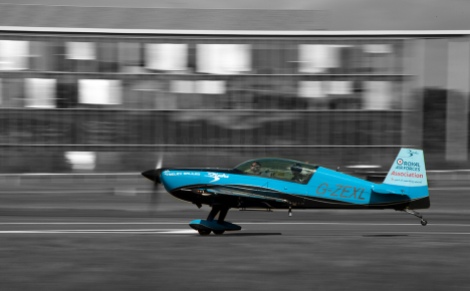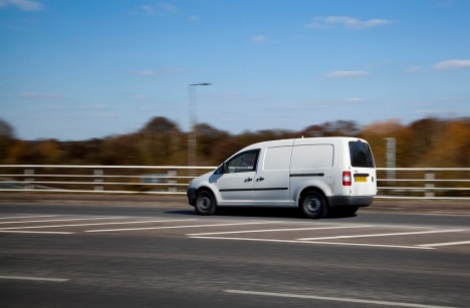The theme this week was ‘panning’ which, as you probably know, is the technique of following a moving subject while taking a shot so as to keep the subject in sharp focus. Most of the time, this results in a blurred background due to the camera movement and gives the impression of motion.
I had a really busy week and only managed to snatch 10 minutes of shooting time whilst sitting in the car. So the above shot is the best I managed out of about 30, shot through a car window with drizzly rain and limited movement. It’s far from perfect but will have to do for the weekly theme – I will have another crack at this when I get more time.
Panning can be a tricky technique to master and if you do try it, don’t be surprised if you only get one good shot in 20 at best.
The first problem is often where to focus. If you set the camera to continuous focus (sometimes called servo) mode, it will try and keep things sharp but doesn’t always succeed. Another option is to focus on the spot where you want to take the actual picture then put the camera in manual and follow the object until it is at that point before pressing the shutter (sometimes called a focus trap). Of course, if you miss the spot or don’t have the spot properly focussed in the first place you get a blurred image.
Focussing is made easier if the object moves horizontally left to right in front of you because the distance from you to the object doesn’t change very much. Trying to pan to shoot an object moving towards or away from you is much more difficult and you’ll find that the “focus trap” method I describe above is more reliable in this case.
Incidentally, the focus trap method is also a good way of photographing children at play – pick a point and when they run through that point, take the shot.
The other variable in the equation is shutter speed. This needs to be long enough to blur out the background but not so long that your movement introduces subject blur. Ideally you want the speed as fast as possible to give you the best chance of a sharp object, while still seeing some background blur. The precise numbers will depend on how fast you and your subject are moving.
This is one reason why panning shots on a smart phone are tough, you can’t control the shutter speed. But if you select a night mode or a firework mode or something similar this will force the camera to a slower speed and you might just get something, as I did here with this shot;
One final tip for smooth panning results is to rotate your whole body – or at least from the hips, keeping your arms and torso fixed – this will help minimise up/ down movement and blur.
Then, if all else fails, you can cheat. This is a panning shot of an empty road with a shot of a parked van Photoshopped over the top. I added some blur to the wheels and the shadow, managed to get back some of the scene through the window with layer masks and job done.
Give it a try (panning not cheating) – it’s a good technique to perfect and improves your ability to hold a camera steady but relaxed.








